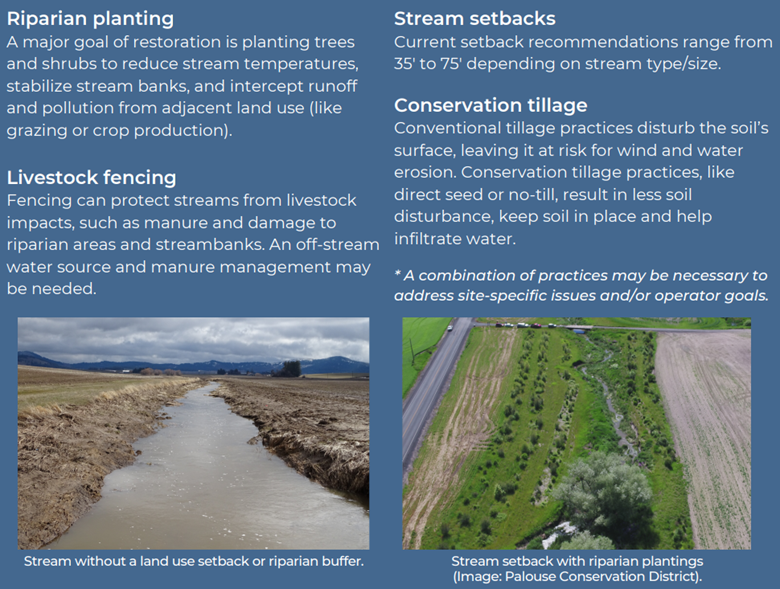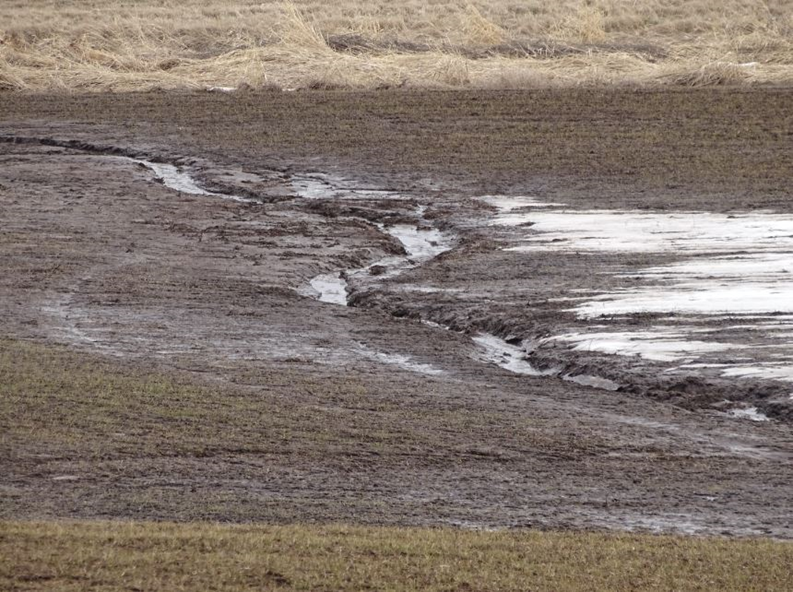The Hangman Creek watershed is changing, and we don’t mean changing from summer to fall. After five years and $9 million in state funding, trees and shrubs planted along the streambanks are growing. These are the critical signs of the healthier watershed that is on the way. Much of this progress is due to our innovative pilot program that is helping an increasing number of producers protect water quality while conserving their soil.
How it started
The successful pilot program got its start after Mitch Redfern, an environmental specialist at Ecology, began talking to landowners about how to better protect water quality by restoring streambanks with native plants. Also known as riparian buffers, the native trees, shrubs, and grasses that grow naturally along streams improve water quality by decreasing erosion, filtering pollutants, and providing shade. While many landowners were interested in improving water quality, Redfern often heard concerns about long-term management and the cost of replacing productive cropland with riparian vegetation.
These interactions are what led to a partnership with the Spokane Conservation District to create a new way to support the Hangman Creek watershed. Ecology grant funding is used to pay producers up to $350 per acre for riparian buffers. The program includes 15-year contracts to help with vegetation establishment and management. For landowners and/or producers, this means they are compensated for land they will no longer use for crops, which is also watered and managed for weeds by the conservation district. As the program has gained traction, we’ve heard from landowners who are interested in joining the program.
On a recent site visit, Mitch was greeted by an enthusiastic producer who told him "It's about time I've met you, I've been waiting for you guys to contact me for a while now!” Shortly after the site visit, the landowners agreed to a project including 127 acres of riparian buffer along seven miles of tributaries that run into Hangman Creek. So far, the pilot program has protected 19 miles of Hangman creek, including 350 acres of planted streamside vegetation.
Snapshot of a mailer sent to landowners as part of the pilot program.
Why we are focusing on Hangman Creek
In 2015, Spokane Riverkeeper challenged the U.S. Environmental Protection Agency over the Hangman Creek Pollution Report because it did not include an adequate plan to address the significant pollution entering the Spokane River at the Hangman confluence. Working with Riverkeeper, we came up with a strategy to evaluate land along Hangman Creek and its tributaries for runoff pollution.
Erosion forming a gully during spring runoff in a dryland agriculture field
Most of the land within the watershed is dryland agriculture, wheat being the most popular in the region. Conventional tillage and plowing cause a lot of erosion, which leads to more dirt, nutrients, and chemicals washing into the creek and then into the Spokane River. Too many nutrients in the water can trigger toxic algae blooms in Lake Spokane. Livestock farming in the Hangman Creek area can also add to pollution by increasing erosion, nutrients, and bacteria in the water. Runoff pollution affects recreation like fishing and swimming and harms fish and wildlife that need clean, cool water to survive.
Riparian buffers are part of a suite of practices that benefit agricultural land and the greater Spokane River watershed. These are research-based strategies that include reduced tillage, cover cropping, and livestock management. For more details on our continued work in the Hangman watershed, read the newly published Hangman Settlement Agreement 2023 Annual Report.

